Giethoorn is a village in the province of Overijssel in northern Netherlands. With a population of less than 3,000 people, the village (map) is composed of numerous little islands dissected by canals and waterways. Present-day Giethoorn, famously known as the ‘Dutch Venice’, is one of the most visited places in the Netherlands. There are numerous things to do in Giethoorn but visitors mostly come here to sail along the serene canals, admire the gorgeous houses and the lush gardens, and enjoy the quintessentially Dutch scenery. In my book, Giethoorn is the most picturesque village in the Netherlands – reason enough to warrant a visit!

Things to do in Giethoorn
Giethoorn was founded in the 13th century when people settled here to harvest the peatlands. Over the centuries, peat digging led to the creation of lakes and ponds, while canals were built to transport the peat to nearby ports. The ‘Gieterse Punter‘, a locally-made wooden barge, was traditionally used to move the peat. The locals built their homes, with the characteristic thatched roofs, on the islands and connected the islands with more than 170 wooden bridges. These days, it’s this combination of tranquil waterways and gorgeous houses that attracts tourists from around the world.

Giethoorn is a popular day trip from Amsterdam (about a 1.5 hour drive) but I recommend spending a few days there or in the area to truly enjoy its beauty. Here are my suggestions for things to do in Giethoorn and the surrounding area:
Explore the Giethoorn canals
Going on a boat trip is undoubtedly the best thing to do in Giethoorn. You can join a group tour (typically lasts about an hour) or hire an electric boat and navigate the canals yourself. Whichever you choose, sit back and enjoy the beauty of this idyllic village, the charming thatched farmhouses and the cute wooden bridges.

The Dorpsgracht (‘Village Canal’) runs the length of the village. From there, canals and smaller waterways branch off in either direction. If you’re hiring a boat, you will be provided with a route map. The waterways are pretty narrow so I recommend sailing in single file and keeping your distance from other boats whenever possible.
There are numerous places where you can join a tour, hire a boat or kayak such as Smit (also a great place for a meal) and Boat Rental Giethoorn.
Hire a kayak or bicycle
For the active ones, you can hire a kayak to explore the waterways and the neighbouring Bovenwijde lake.

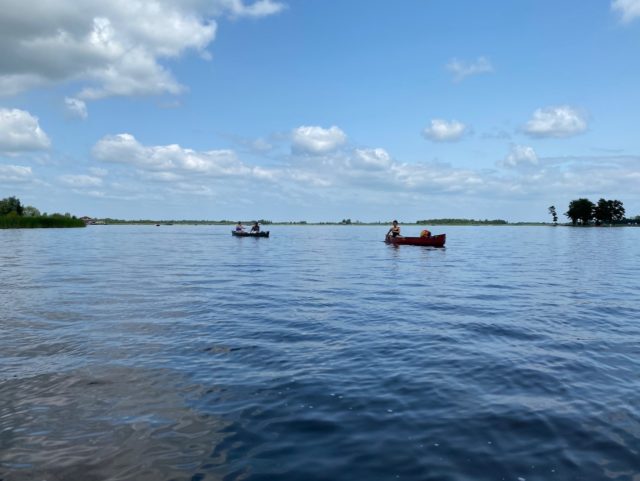

You can also hire a bicycle but I don’t recommend it in the village as the narrow paths are also used by pedestrians, while locals use their bikes to get around, making the paths crowded, especially during the busy summer months. As an alternative, I suggest cycling along the 41.5km Giethoorn de Wieden bicycle route which takes you around the beautiful wetlands of the Beulakerwijde and Belterwijde lakes just outside Giethoorn.
Explore the village on foot
In addition to seeing the village from the water, I recommend going on a walk around the village. The main path, Binnenpad (‘Inside Lane’), runs parallel with the Dorpsgracht and is the easiest path to take. From here, you can cross some of the bridges to explore parts of the village away from the main canal. One museum worth visiting is the Museum Giethoorn ‘t Olde Maat Uus, which showcases the history of Giethoorn and its inhabitants.


The Binnenpad continues south to the Langesteeg (‘Long Alley’) and the Zuiderpad (‘Southern Lane’). Along the way, you’ll pass beautiful farmhouses and their lovely gardens, a variety of cafés and restaurants, several accommodations as well as numerous smaller museums and shops. Note: this is a village where people live. Please respect them by keeping noise levels low and refraining from entering their property (including gardens).
Places near Giethoorn to visit
Weerribben-Wieden National Park
The Weerribben-Wieden National Park is a unique area formed by centuries of peat harvesting. This is the largest bog area in northwest Europe and consists of lakes, waterways, marshes and reedlands, for a large part created by early settlers. The park is situated a short distance from Giethoorn. Take your time to hike or cycle along the paths, or hire a boat or kayak to explore the waterways. Visit the park’s website for more info.
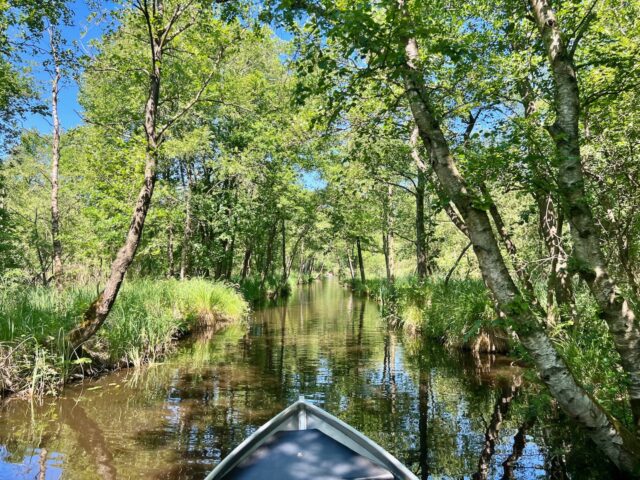
A great place to base yourself in the Weerribben-Wieden National Park is the beautiful village of Kalenberg (map). I recommend Hotel Het Rietershuijs. Situated at the water’s edge, this small hotel has spacious rooms, and a terrific restaurant and terrace. They also offer e-boats, kayaks and SUPs for hire, and plenty of info about sailing, hiking and bike routes.

Blokzijl
The peat that was harvested in Giethoorn was transported to numerous nearby ports, one of which was Blokzijl (map). This harbour town is an absolute gem and you shouldn’t miss it if you’re visiting Giethoorn – it’s only a 15-minute drive away (or 35 minutes by bicycle).


Founded in the 16th century as a trading post for peat, Blokzijl is nowadays a popular town for water sports enthusiasts. Stroll around the beautiful harbour and admire the stunning 17th century houses, then take a peek in the quiet lanes behind the harbour. There are two wonderful waterside cafés where you can stop for a drink and a meal: Grand Café Prins Mauritshuis (harbour) and Sluiszicht (next to the locks).
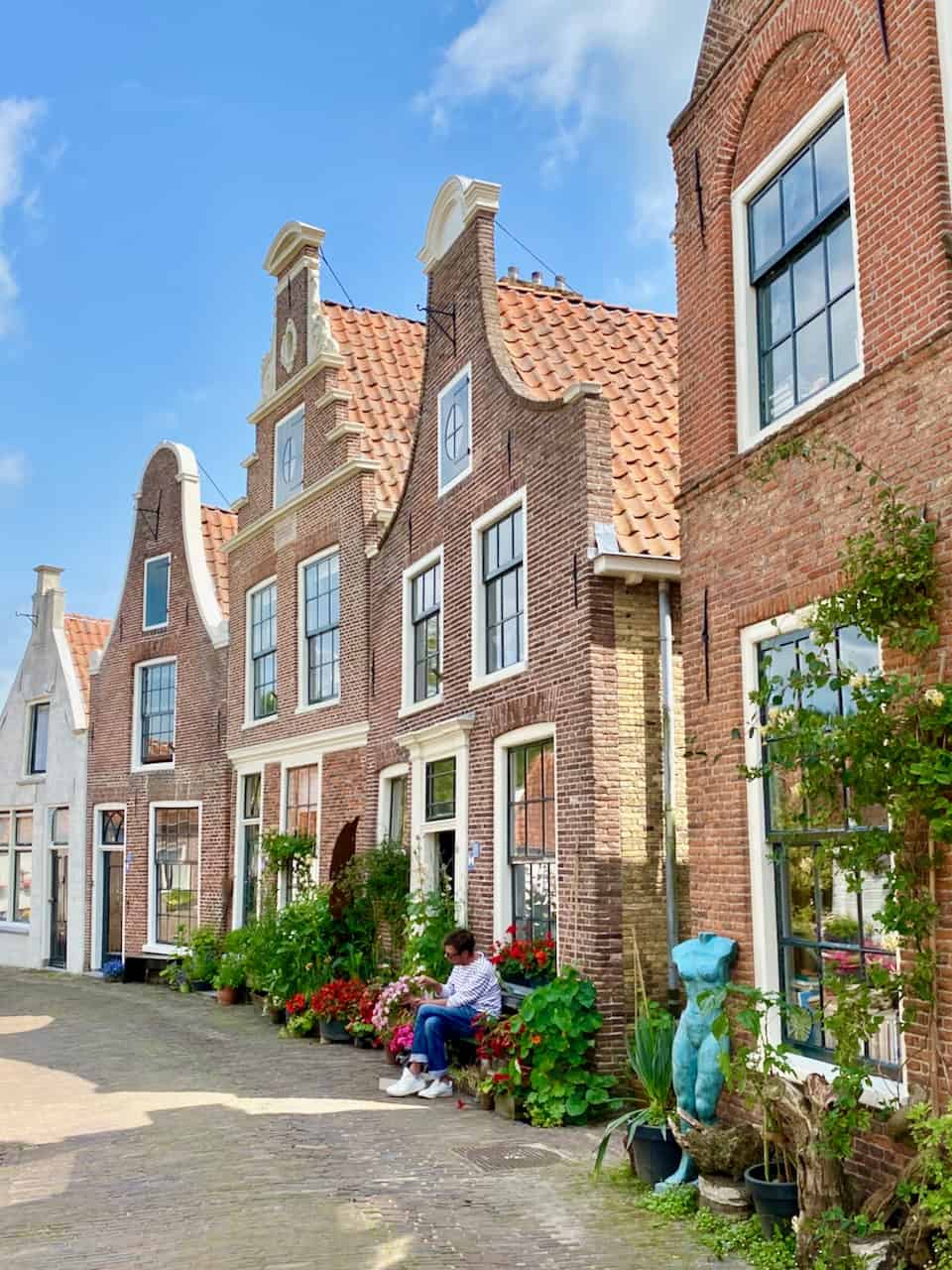

Blokzijl is also home to one of the top restaurants in the region: Kaatje bij de Sluis. This Michelin-starred restaurant serves exquisite food in a wonderful ambiance (ask for a table with a view of the locks).

Don’t miss the stork’s nest in the tree opposite Kaatje bij de Sluis.

For a simpler (and cheaper) meal, head to Kibbeling (a fish shop across the road from Grand Café Prins Mauritshuis) for delicious fried fish (try the ‘kibbeling’) and fish sandwiches.
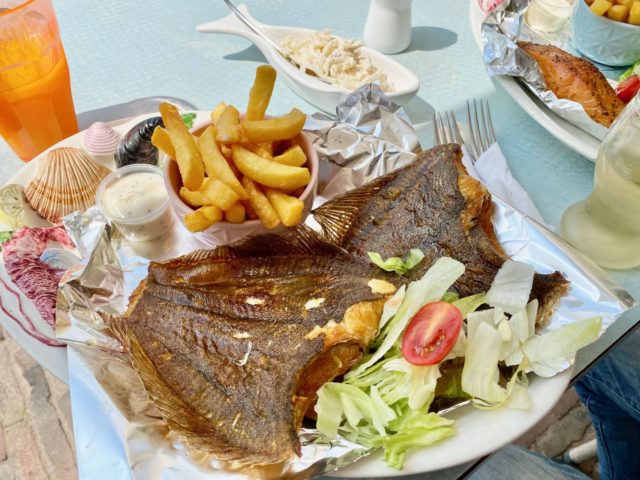
If you have several days to spare, there are other interesting places near Giethoorn to visit in the province of Overijssel. I’ve highlighted three below, all of which are historic trading towns that used to belong to the Hanseatic League (a commercial and defensive confederation that encompassed major merchant cities in northern Europe, from the Baltics, Scandinavia and Germany to the Netherlands during the medieval ages).
Hasselt
Hasselt (map) is a small town on the banks of the Zwarte Water (Black Water). An important trading town in medieval times, Hasselt joined the Hanseatic League in 1350 AD. I recommend a walk around the charming town centre (with its medieval Town Hall and St. Stephens Church), and along the canals and promenade (Julianakade) before enjoying a drink or meal at the waterfront.


Zwolle
Zwolle is an ancient city that experienced its Golden Age in the 15th century. The city thrived on trade and joined the Hanseatic League in the 13th century.

The capital of the province of Overijssel, Zwolle is a lovely town to explore on foot. Major highlights include the Museum de Fundatie (with its extraordinary ‘egg’ atop a historic palace), the Sassenpoort (a 15th century tower gate), the Grote Kerk (Big Church), the Peperbus church tower and remnants of the ancient city walls. Zwolle also has the distinction of having the best restaurant in the country: De Librije, an excellent 3-Michelin star restaurant.

With its many attractions, cafés, restaurants and accommodation options, Zwolle makes for a good base, from which to explore the surrounding region. Search for hotels in Zwolle.
Kampen
Kampen (map) lies near the mouth of the Ijssel River, a tributary of the Rhine. This strategic location made the city an important trading post in the Middle Ages, and an influential member of the Hanseatic League. These days, Kampen is a wonderful town to explore. From its medieval city gates, Old City Hall and numerous churches, to lively squares, beautiful Art Nouveau architecture and leafy parks, there’s quite a lot to see in Kampen.





Kampen is another great place to base yourself if you intend to explore the region. Places like Giethoorn, Hasselt and Zwolle are all within easy driving distance. One accommodation I can recommend in the town centre is the charming De Stadsboerderij (they also serve a fabulous breakfast and free parking is a 7-minute walk away). Search for accommodations in Kampen.
How to get to Giethoorn
Giethoorn is a 1.5 hour drive from Amsterdam. It takes a bit more than two hours by public transport. From Amsterdam Central Station, take the train to Steenwijk (involves a connection in Almere), then hop onto bus no. 70 (about 20 minutes) to Giethoorn village.
When to visit Giethoorn
Giethoorn can be visited year round, though I recommend visiting in spring or early-summer to avoid the summer crowds (July/August) and when the village is at its greenest. Giethoorn is a very popular day trip destination so I suggest arriving there first thing in the morning. To truly enjoy the village when the day-trippers have left, I recommend spending 1-2 nights there or in a nearby village. Giethoorn can also be easily combined with a road trip around the Markermeer or a visit to Friesland, a province in the north.






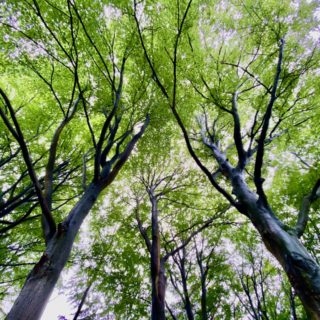






That looks like such a great place to visit. Can’t wait to start traveling back to the area again.